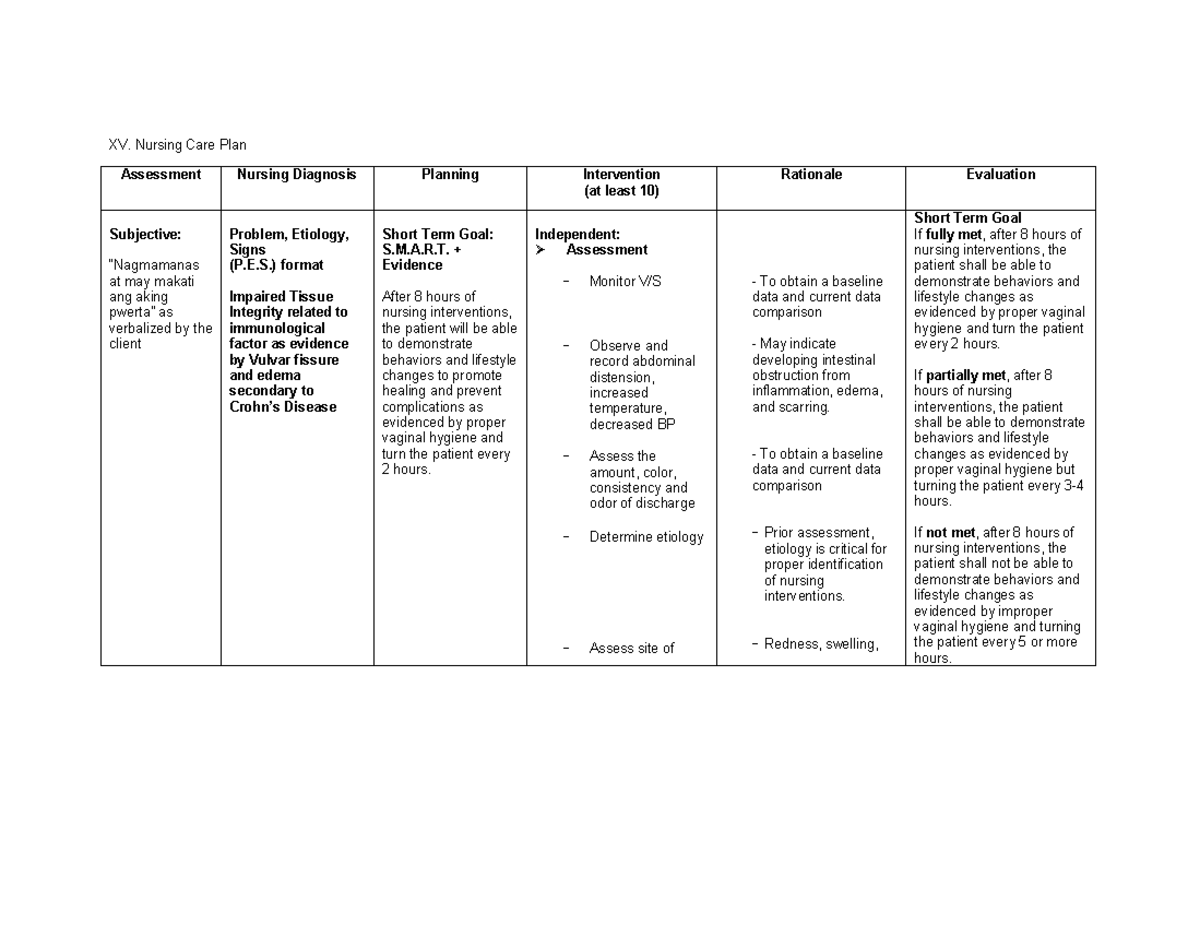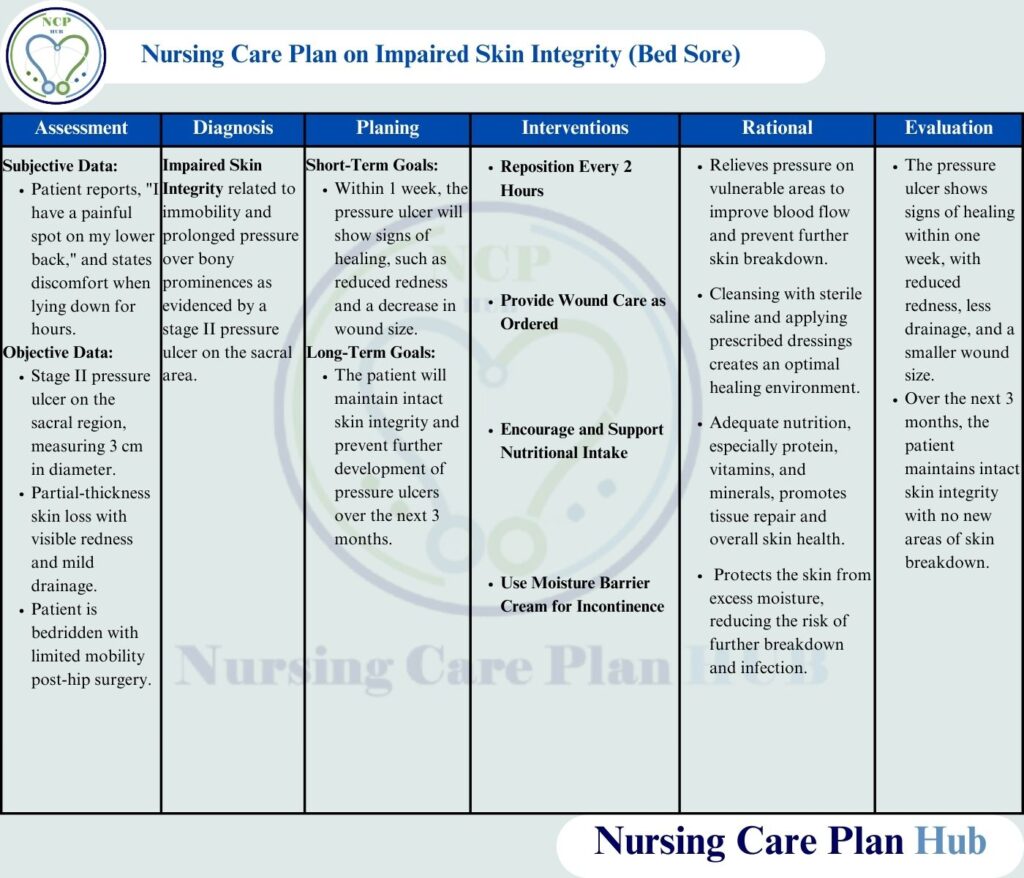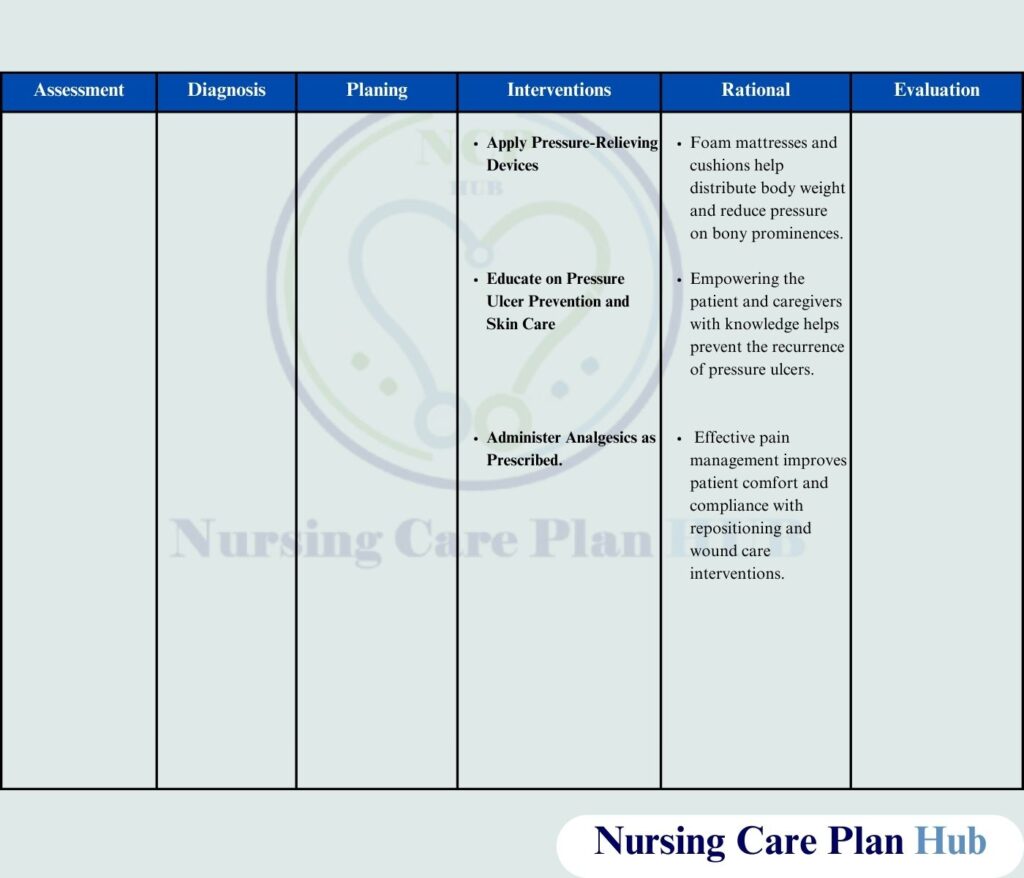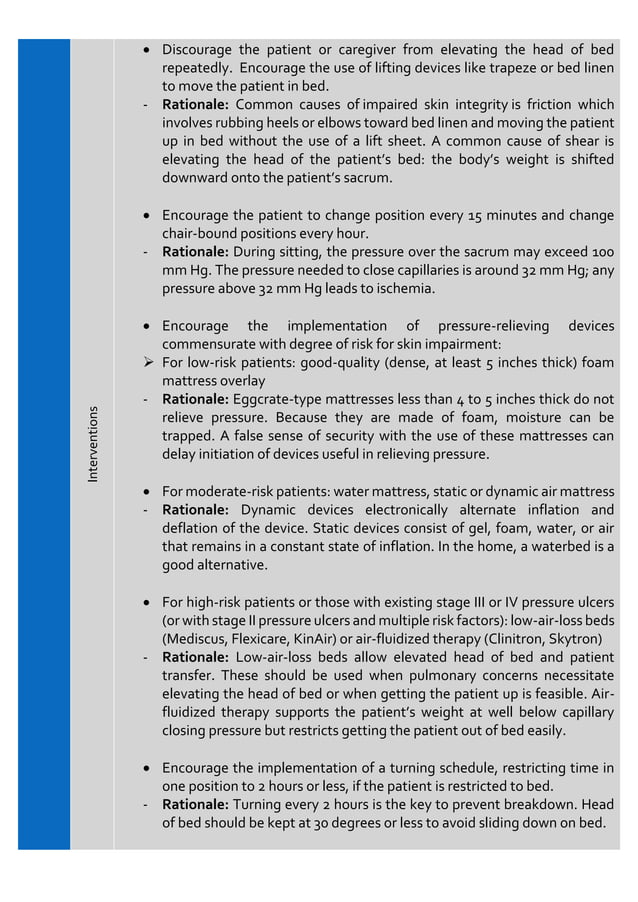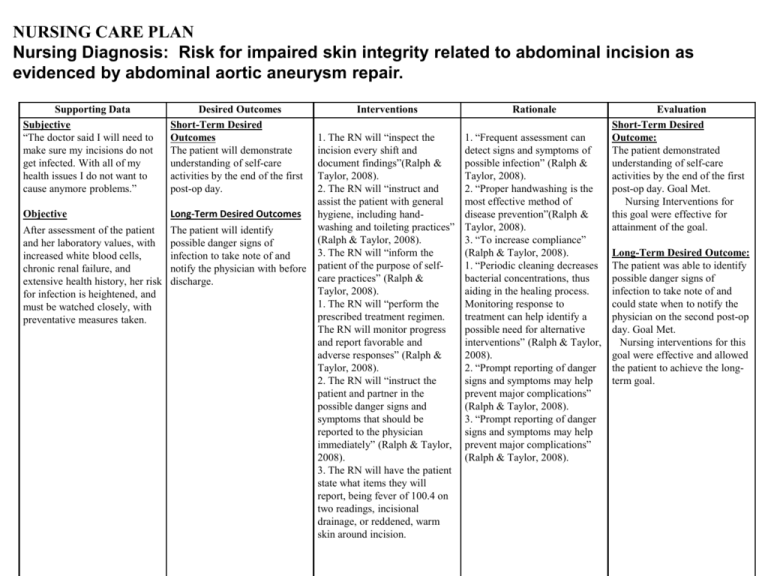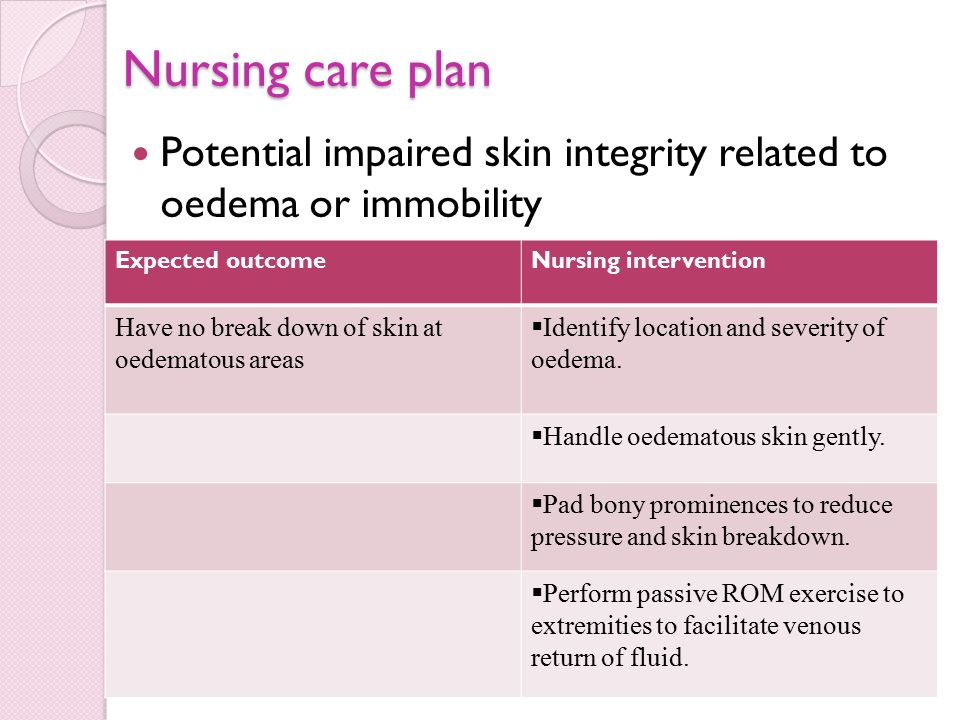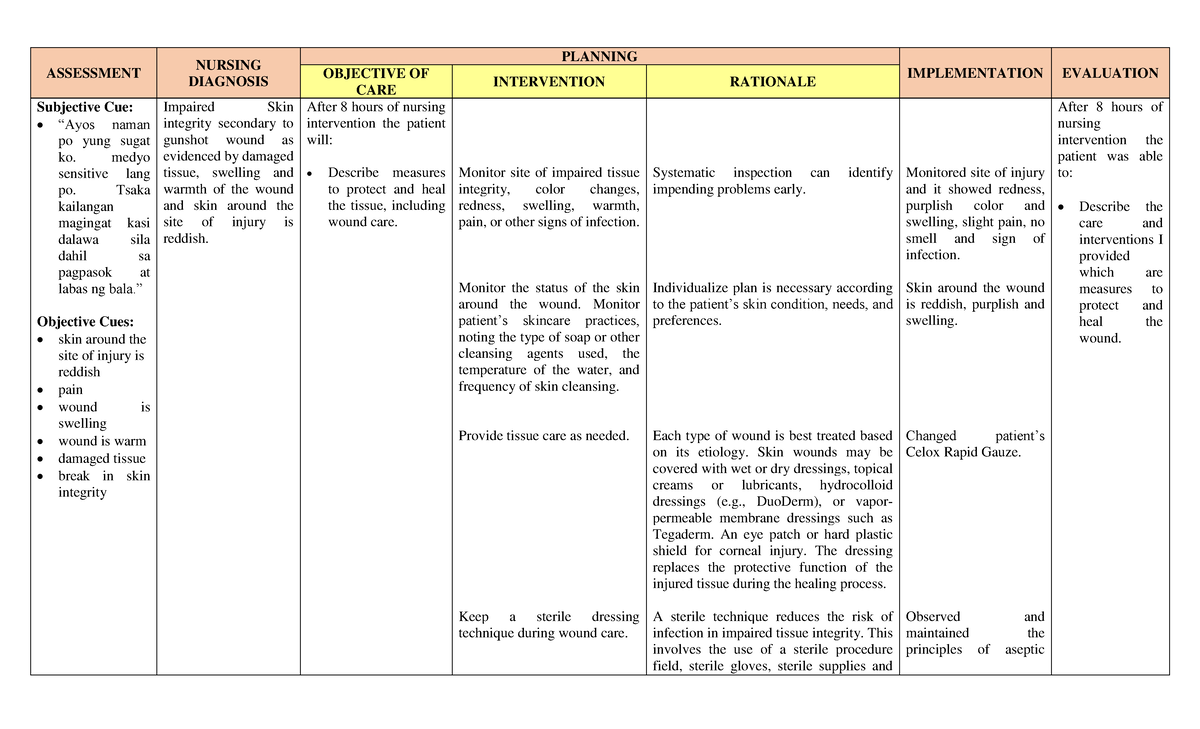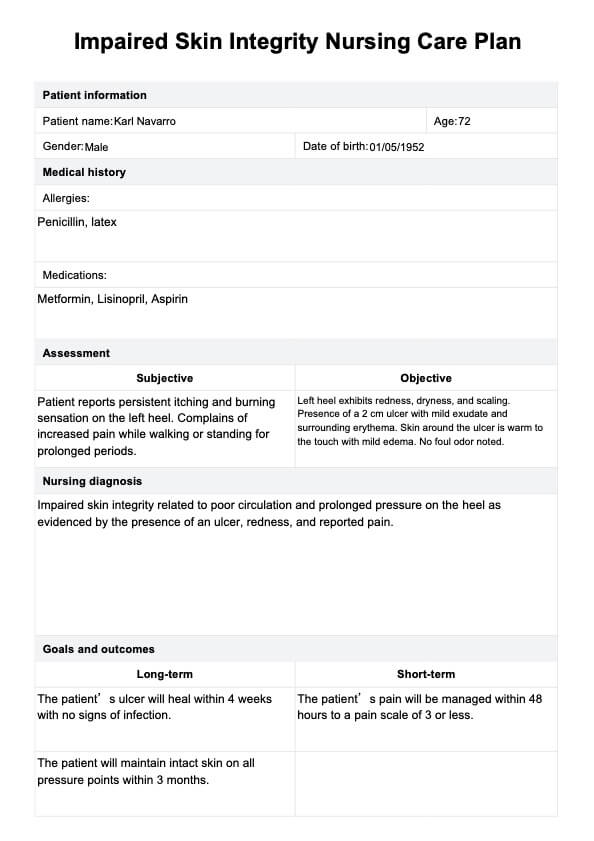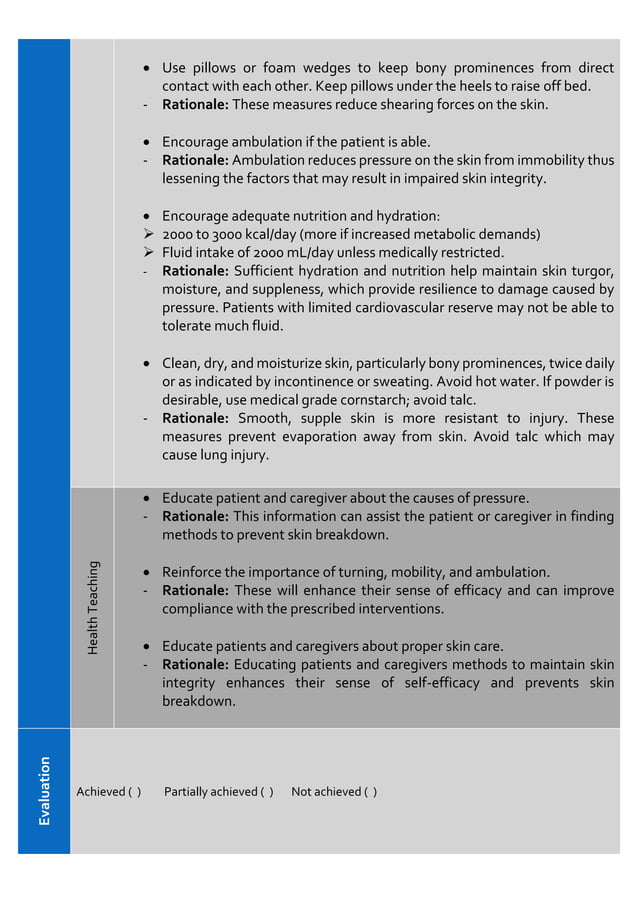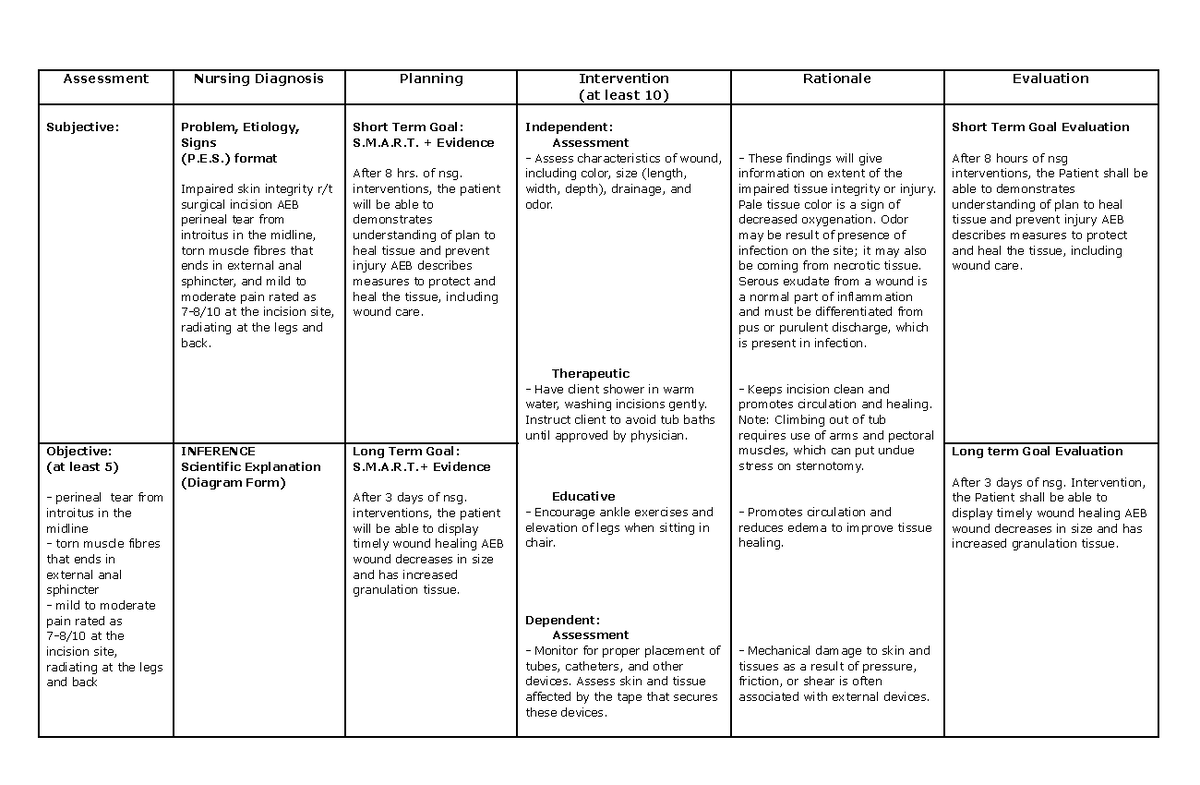Nursing Care Plan For Risk For Impaired Skin Integrity
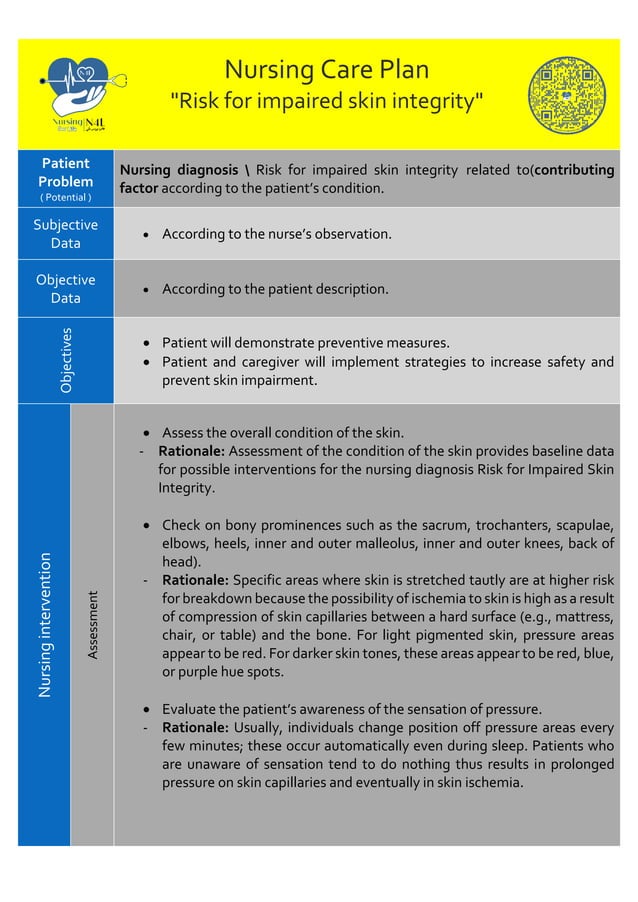
The gentle hum of the hospital filled the room, a soundtrack to the tireless work of caregivers. Sunlight streamed through the window, illuminating dust motes dancing in the air and highlighting the faint lines etched on Mrs. Eleanor’s face as she lay in bed. A seasoned nurse, Sarah, carefully adjusted the pillows beneath Mrs. Eleanor's frail frame, her touch gentle yet firm, a silent conversation of care and concern.
The risk of impaired skin integrity, often overlooked, is a major concern for patients like Mrs. Eleanor. It presents a significant challenge in maintaining overall health and well-being, requiring proactive and personalized nursing care plans to prevent pressure ulcers and other skin complications.
Understanding the Vulnerability
Impaired skin integrity, in simpler terms, means the skin's natural protective barrier is compromised. This can happen due to various factors, including prolonged pressure, friction, moisture, poor nutrition, and underlying medical conditions. Elderly individuals like Mrs. Eleanor, with thinner skin and reduced mobility, are particularly vulnerable.
The impact of compromised skin extends far beyond physical discomfort. Skin breakdown can lead to infection, pain, delayed healing, increased healthcare costs, and a significant decline in a patient's quality of life.
The Nursing Care Plan: A Proactive Shield
A well-crafted nursing care plan serves as a roadmap for nurses, guiding their actions and ensuring consistent, individualized care. For patients at risk of impaired skin integrity, the plan focuses on prevention and early intervention.
The nursing care plan includes a comprehensive assessment. This involves evaluating the patient's skin condition, mobility, nutritional status, and risk factors such as incontinence or diabetes.
Based on the assessment, specific goals and interventions are established. These are designed to minimize pressure, maintain skin hygiene, promote adequate nutrition, and educate the patient and family about preventive measures.
Key Components of a Nursing Care Plan
One of the primary interventions is pressure redistribution. This involves regular repositioning of the patient, typically every two hours, to relieve pressure on bony prominences like the sacrum, heels, and hips.
Specialized support surfaces, such as pressure-reducing mattresses and cushions, can further minimize pressure. The choice of support surface depends on the patient's individual needs and risk level.
Maintaining skin hygiene is crucial. This includes gentle cleansing with mild soap and water, followed by thorough drying and application of a moisturizing barrier cream. Avoiding harsh chemicals and excessive scrubbing helps protect the delicate skin.
Nutritional support plays a vital role in skin health. A balanced diet rich in protein, vitamins, and minerals promotes tissue repair and regeneration. Patients who are malnourished may require nutritional supplements to support healing.
Education is paramount. Nurses teach patients and their families about the risk factors for impaired skin integrity, preventive measures, and early signs of skin breakdown. Empowering patients to participate in their own care improves outcomes.
Monitoring and documentation are ongoing processes. Nurses regularly assess the patient's skin condition, document any changes, and adjust the care plan as needed. This ensures that the interventions remain effective and responsive to the patient's evolving needs.
Evidence-Based Practice: Guiding the Way
The development and implementation of nursing care plans are guided by evidence-based practice. This means that interventions are based on the best available research and clinical expertise.
Organizations like the National Pressure Injury Advisory Panel (NPIAP) provide guidelines and resources for preventing and managing pressure injuries. These guidelines are regularly updated based on the latest research findings.
Studies have consistently shown that implementing comprehensive nursing care plans significantly reduces the incidence of pressure injuries. A study published in the Journal of Wound, Ostomy and Continence Nursing demonstrated that a multifaceted intervention program, including pressure redistribution, skin care, and education, resulted in a 50% reduction in pressure injury rates.
The Human Touch: Beyond the Protocols
While protocols and guidelines are essential, the human touch remains at the heart of effective nursing care. Empathy, compassion, and a genuine connection with the patient can make a profound difference.
Taking the time to listen to the patient's concerns, address their anxieties, and provide emotional support can enhance their comfort and well-being. Building a trusting relationship fosters collaboration and encourages the patient to actively participate in their care.
Sarah, the nurse tending to Mrs. Eleanor, exemplified this holistic approach. She not only implemented the prescribed interventions but also engaged in meaningful conversations with Mrs. Eleanor, creating a bond of trust and mutual respect.
Challenges and Opportunities
Despite the advancements in knowledge and technology, challenges persist in preventing and managing impaired skin integrity. Resource constraints, staffing shortages, and inadequate training can hinder the implementation of effective nursing care plans.
However, these challenges also present opportunities for innovation and improvement. Embracing technology, such as telehealth and remote monitoring, can enhance access to care and support early intervention.
Investing in staff training and education can empower nurses to provide optimal care and promote a culture of prevention. Collaboration among healthcare professionals, including nurses, physicians, dietitians, and therapists, is essential for a coordinated approach.
Looking Ahead
The future of skin integrity management lies in personalized, proactive, and evidence-based care. By embracing technology, fostering collaboration, and empowering nurses, we can create a healthcare system that prioritizes prevention and promotes healing.
The story of Mrs. Eleanor and countless others underscores the importance of diligent and compassionate nursing care. It reminds us that even the smallest act of kindness, like carefully adjusting a pillow, can make a world of difference.
As the sun dipped below the horizon, casting long shadows across the hospital room, Sarah gently smoothed Mrs. Eleanor's blanket, a silent promise of continued care and unwavering support. The fight against impaired skin integrity is a constant endeavor, one that requires vigilance, knowledge, and above all, a compassionate heart.

